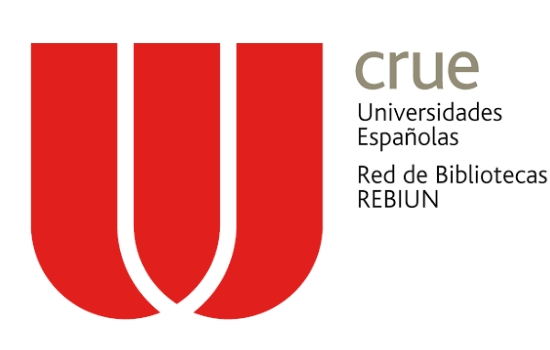Género, matemáticas culturales, y arte textil de los Mazahua y Hñähñu
DOI:
https://doi.org/10.22267/relatem.22152.91Keywords:
Traditional artist;, textiles, Bishop’s categories, feminine identityAbstract
This work focuses on traditional textile art and its connections with cultural mathematics and concepts of gender, in the Otopame cultures of the Mazahua and Hñähñu (Otomi). Using Bishop’s six categories of mathematical activities, we first confirm that there are mathematical aspects of traditional textile art. An analysis is then made of how one may interpret traditional textile art in the context of female gender identity in the Hñähñu and Mazahua cultures. It turns out that the expression of female identity in these two cultures connects mainly with cultural identity and family economies. In particular, Hñähñu gender roles associated with traditional textile art are not associated as exclusively with women as is the case for the Mazahuas and some regional cultures such as the Aztecs and Maya. The last part contains observations of codices in which we can verify that Spanish locals assumed a distinct social role of women that occurred post conquest. In this distinct gender role assumption, abilities in traditional textile art, and hence in mathematical skills, were of lesser value than was the case pre-conquest. The reduced value of such skills coincides with gender roles of conquest era Europe in which women’s abilities in mathematics were explicitly suppressed.
Downloads
References
Aguilera, C. (2000). Cihuacóatl, diosa otomí. Estudios de Cultura Otopame, 2, 29-43.
Amorós, C. (1997). Tiempo de feminismo: sobre feminismo, proyecto ilustrado y postomodernidad [ie postmodernidad] (Vol. 41). Universitat de Valencia
Anawalt, P. R., y Berdan, F. F. (1992). The Codex Mendoza. Scientific American, 266(6), 70-79
Ascher, M. (1991). Ethnomathematics: A multicultural view of mathematical ideas. Brooks/Cole.
Ávila, A. (2012). Las técnicas textiles y la historia cultural de los pueblos otopames. Estudios de Cultura Otopame, 8, 127-192.
Barquera, E. (2005). Códice Florentino y Pensamiento Matemático. Cultura Otomí en el Valle del Mezquital. Bolema-Boletim de Educação Matemática, 18(23), 59-77.
Barquera, E. y Solares-Rojas, A. (2016). Conocimientos matemáticos involucrados en la producción de bordados de la cultura Hñahñu: un análisis semiótico-didáctico. Revista Latinoamericana de Etnomatemática, 9(1), 26-4. http://www.redalyc.org/articulo.oa?id=274044103003.
Barta, J., Abeyta, A., Gould, D., Galindo, E., Matt, G., Seaman, D., y Voggessor, G.
(2001). The mathematical ecology of the Shoshoni and implications for elementary
mathematics education and the young learner. Journal of American Indian Education, 1-27
Barta, J., Eglash, R., y Barkley, C. (2014). Math is a verb: Activities and lessons from cultures around the world. National Council of Teachers of Mathematics.
Barta, J., y Shockey, T. (2006). The mathematical ways of an aboriginal people: the northern Ute. Journal of Mathematics and Culture, 1(1), 79-89.
Berlo, J. C. (1992). Beyond bricolage: Women and aesthetic strategies in Latin American textiles. RES: Anthropology and Aesthetics, 22(1), 115-134.
Bishop, A. (1988). Mathematical enculturation: A cultural perspective on mathematics education. Kluwer Academic Publishers.
Brumfiel, E. M. (1991). Weaving and cooking: Women’s production in Aztec Mexico. Engendering archaeology: Women and prehistory, 224-251.
Brumfiel, E. M. (1996). The quality of tribute cloth: the place of evidence in archaeological argument. American Antiquity, 61(3), 453-462.
Carrasco, P. (1950). Los otomíes: cultura e historia prehispánicas de los pueblos mesoamericanos de habla otomiana. Instituto Nacional de Antropología e Historia, México DF.
Castillero Vela, B. (2018). El textil mazahua contemporáneo: San Cristóbal de los Baños y sus textiles. Tesis de Maestría. UNAM
Costin, C. L. (1995). Cloth production and gender relations in the Inka Empire. En P. Peregrine, C. Ember, & M. Ember (Eds.), Research frontiers in anthropology – Advances in archeology and physical anthropology. Englewood Cliffs, NJ: Prentice Hall.
Costin, C. L. (1998). Housewives, chosen women, skilled men: Cloth production and social identity in the last Prehispanic Andes. Archeological Papers of the American Anthropological Association, 8(1), 123–141.
Enciclopedia de los Municipios de México. (2005). Instituto Nacional para el Federalismo y el Desarrollo Municipal, Gobierno del Estado de México. https://web.archive.org/web/20070526133323/http://www.elocal.gob.mx/work/templates/enciclo/mexico/mpios/15064a.htm.
Gero, J. y Conkey, M. (ed.). (1991). Engendering archaeology: women and prehistory. Oxford: Basil Blackwell.
Gilsdorf, T. (2012). Introduction to cultural mathematics: With case studies in the Otomies and Incas. John Wiley & Sons.
Hendon, J. (1996). Archaeological approaches to the organization of domestic labor: household practice and domestic relations. Annual review of anthropology, 25(1), 45-61.
Hendon, J. (1997). Women’s work, women’s space, and women’s status among the Classic-period Maya elite of the Copan Valley, Honduras. Women in Prehistory: North America and Mesoamerica, 33-46.
Hendon, J. A. (2006). Textile production as craft in Mesoamerica: Time, labor and knowledge. Journal of Social Archaeology, 6(3), 354-378.
Hermann Lejarazu, M. (2001). Códices tributaries de Mezquiahuala. Códices del Estado de hidalgo, State of Hidalgo Codices, Laura Elena Sotelo Santos, Victor Manuel Ballesteros García, Evaristo Luvián Torres, coord. Pachuca: UAEH, 88-99.
Johnson, I. (2009). Algunos datos sobre textiles antiguos y contemporáneos de la región Otomí-Mazahua. III Coloquio Internacional sobre Otopames, 39 - 44.
Joyce, R. (2000). Gender and power in prehispanic Mesoamerica. University of Texas Press.
Joyce, R. (2012). Archaeology of Gender in Mesoamerican Societies. The Oxford Handbook of Mesoamerican Archaeology.
Joyce, R. (2021). Wealth, Women’s Labour, and Forms of Value: Thinking from the Study of Ancestral Central America. En The Critique of Archaeological Economy. Springer, Cham, 35 - 53.
Kelly, S. E., y Ardren, T. (eds.). (2016). Gendered labor in specialized economies: archaeological perspectives on female and male work. University Press of Colorado.
Lagarde, M. (2018). Género y feminismo: desarrollo humano y democracia. Siglo XXI
Editores México.
Lastra, Y. (2006). Los otomíes: su lengua y su historia. UNAM.
Masingila, J. (1994). Mathematics practice in carpet laying. Anthropology & Education Quarterly, 25(4), 430-462.
McCafferty, G. G., y McCafferty, S. D. (2006). Textile Imagery and Landscape in the Mixtec Codices. Space and Spatial Analysis in Archaeology, 333-341.
McCafferty, S. D., y McCafferty, G. G. (2012). As the Whorl Turns: Function and Meaning in Mesoamerican Textile Production En Oxford Handbook of Mesoamerican Archaeology. Oxford University Press. 628-638.
Medina, A., y Quezada, N. (1975). Panorama de las artesanías otomíes del Valle del Mezquital. UNAM.
Millroy, W. (1991). An ethnographic study of the mathematical ideas of a group of carpenters. Learning and individual differences, 3(1), 1-25.
Mohar Betancourt, L. (2001). Códice Mendocino y Matrícula de tributos. Códices del Estado de Hidalgo, State of Hidalgo Codices. Laura Elena Sotelo Santos, Victor Manuel Ballesteros García, Evaristo Luvián Torres, coord. Pachuca: UAEH, 48 – 55.
Montón-Subías, S., y Hernando, A. (2018). Modern colonialism, eurocentrism and historical archaeology: some engendered thoughts. European journal of archaeology, 21(3), 455-471.
Peñafiel, A. (1885). Nombres geográficos de México: Catálogo alfabético de los nombres de lugar pertenecientes al idioma" Nahuatl": estudio jeroglífico de la matrícula de los tributos del Códice Mendocino. Oficina de la Secretaría de Fomento.
Reiter, R. (1975). Toward an Anthropology of Women. Monthly Review Press.
Rimarachín Cabrera, I., Zapata Martelo, E., y Vázquez García, V. (2001). Gender, rural
households, and biodiversity in native Mexico. Agriculture and Human Values,
(1), 85-93.
Rodríguez-Shadow, M. (ed). (2007). Las mujeres en Mesoamérica prehispánica.
Universidad Autónoma del Estado de México.
Rogers, S. C. (1975). Female forms of power and the myth of male dominance: a model of
female/male interaction in peasant society 1. American ethnologist, 2(4), 727-756.
Romaní, C. (2005). Bordado Tradicional Mazahua de Michoacán. Zitácuaro, México:
PACMYC.
Ross, K. (1978). Codex Mendoza, Aztec Manuscript. Miller Graphics Liber.
Sahagún, B., Anderson, A. J. O., y Dibble, C. E. (1950). General history of the things of New Spain: Florentine codex. Santa Fe, N.M: School of American Research.
Sánchez Plata, F. y Chávez Mejía, C. (2012). Idioma y saberes otomíes. Rescate y práctica en la vida cotidiana. Revista Pueblos y fronteras digital, 7(14), 151-176. http://www.scielo.org.mx/scielo.php?pid=S187041152012000200151&script=sci_arttext.
Sayer, C. (1990). Mexican patterns: a design source book. Studio editions
Shapiro, J. (1981). Anthropology and the study of gender. Soundings, 446-465.
Silverblatt, I. (1978). Andean women in the Inca Empire. Feminist Studies, 4(3), 37-61.
Soustelle, J. (1993 [1937]). La familia otomí– pame del México Central. Centro de Estudios Mexicanos y Centroamericanos, Fondo de Cultura Económica.
Urton, G., y Llanos, P. N. (1997). The social life of numbers: A Quechua ontology of numbers and philosophy of arithmetic. University of Texas Press.
Vázquez Parra, I. (2011). Fajas mazahuas: Arte y simbología. Artes de México, (102), 42- 45.
Ventura, C. (2003). Maya Hair Sashes Backstrap Woven in Jacaltenango, Guatemala, Second Edition; Cintas Mayas Tejidas con el Telar de Cintura en Jacaltenango, Guatemala, Secunda Edición. Cookeville: CV.
Vizcarra Bordi, I. y Marín Guadarrama, N. (2006). Las niñas a la casa y los niños a la milpa: la construcción social de la infancia mazahua. Convergencia, 13(40), 39-67.
Wright Carr, D. (2005a). Hñahñu, Ñuhu, Ñhato, Ñuhmu. Arqueología Mexicana, 13(73), Mayo - Junio, 19.
Wright Carr, D. (2005b). Los otomíes: cultura, lengua y escritura. Tesis doctoral, El Colegio de Michoacán, dos volúmenes. https://www.researchgate.net/publication/236900046_Los_otomies_cultura_lengua_y_escrtura_vol_1, y https://www.researchgate.net/publication/236900081_Los_otomies_cultura_lengua_y_escritura_vol_2
Downloads
Published
How to Cite
Issue
Section
License

This work is licensed under a Creative Commons Attribution 4.0 International License.
Once the article is accepted by the Latin American Journal of Ethnomathematics, the authors cede the rights to publish and distribute the text electronically, including storing it and making it available online.
The authors can distribute their own material without soliciting permission from the Latin American Journal of Ethnomathematics, whenever mentioning that the original version is found at http://www.revista.etnomatematica.org
Copyright © 2008, Latin American Journal of Ethnomathematics
All contents of the Latin American Journal of Ethnomathematics are published under the _ and can be used freely, giving credits to the authors and to the Journal, as established by this license.











